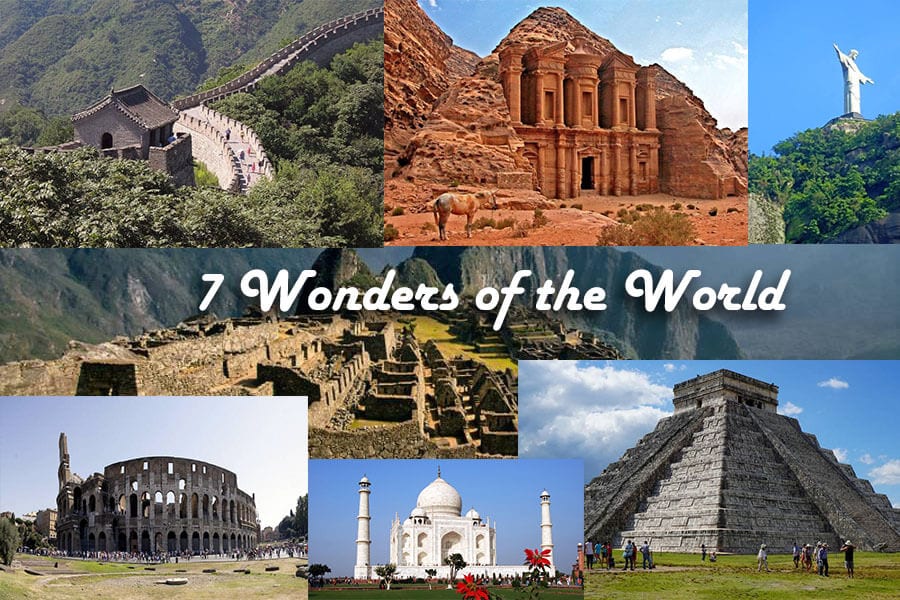7 Wonders of the World
The Seven Wonders of the World is a list of seven man-made structures or sites that were considered to be the most remarkable and impressive in the ancient world. The original Seven Wonders of the World were:
1. China: The Great Wall of China
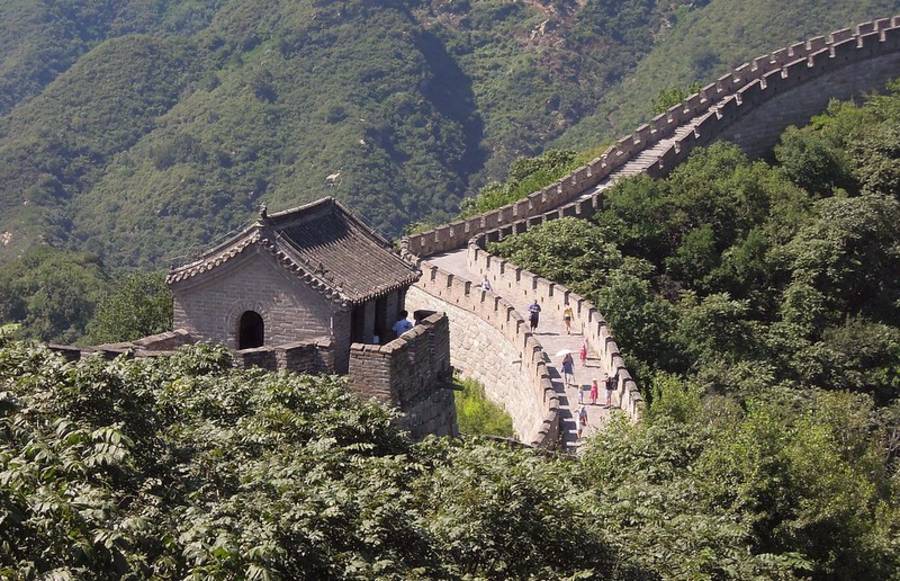
The construction of the “Long Wall” began back in the 3rd century BC after the conquest of new lands in the north, to clearly define the boundaries of the new Chinese civilization and protect the state from raids by barbarian peoples. Then, about a million people were involved in the construction of the grandiose structure, i.e. almost a fifth of the total population of the country.
In the first centuries of our era, the wall was expanded and enlarged, and a line of watchtowers was added to protect the empire’s trade caravans from raids by nomads.
In the XIV – XVII centuries, during the ruling Ming dynasty, the Great Wall was also expanded, while then, for the construction, mostly stronger materials were used than before – stone blocks and bricks. Therefore, the sections of the wall that have been preserved to this day belong to that era.
Ultimately, the length of the wall, together with all branches and natural sections, reached more than eight thousand kilometers, the height of the walls was 6 or 7 meters in different sections, and the thickness was 4 or 5! Yes, of course, the Great Wall of China was not in vain received the title of a new wonder of the world.
2. Italy: Colosseum

The magnificent Colosseum, the symbol of Rome, the truly wonderful construction of the Roman Empire, was built at the end of the first century AD for the emperors of the Flavian dynasty.
Initially, the Colosseum was called – the Flavian Amphitheater. It was the largest amphitheater of its time and the main entertainment arena in Rome. There were gladiatorial fights, animal persecution, and the most luxurious of all spectacles – Navachia (a show with an imitation of a sea battle or gladiatorial sea fights).
For its intended purpose, the Colosseum has been used for almost seven centuries. Then, after the adoption of Christianity by Rome, the amphitheater began to fall into disrepair, and from the 14th century, they began to look at the magnificent construction of antiquity as a source of building material.
The Colosseum has torn apart before the reign of Pope Benedict XIV in the 18th century, who took it under his protection. From then until 1874, a huge cross stood in the center of the Coliseum, surrounded by a series of altars, since this place was stained with the blood of many Christian martyrs. Nowadays, the symbol of Rome, of course, is protected even more carefully.
3. Jordan: Petra

Petra is one of the oldest cities in the world. Initially, the wonderful Peter was the capital of Idumea, which existed in the 18 – 2 centuries BC.
Then Petra became the capital of the Nabataean kingdom (II BC until the beginning of the II century AD), then the Romans settled here until the end of the IV century, later the Romans — Byzantines ruled in the city, followed by the Arabs, then the Crusaders.
For a long time, Petra was at the intersection of the most important trade routes: roads from the Red Sea to Damascus and from Gaza to the Persian Gulf connected here. Thanks to this, the city flourished until the Romans opened the way to the East by sea.
Petra was completely lined up in the rocks. All the houses, temples, and crypts of the magnificent city were carved from the red stone of the desert, perfectly adapted for this. Moreover, a perfect water supply system from terracotta pipes was created in Petra and the inhabitants of the arid area never needed water.
To do this, about 200 reservoirs for collecting liquid were cut down directly in the rocks, and water was also delivered to the city through pipes from all water sources within a radius of 25 km.
Today, every year about half a million people from around the world come to the Great City of Antiquity to see with their own eyes this excellent creation of man.
4. Brazil: Statue of Christ the Redeemer
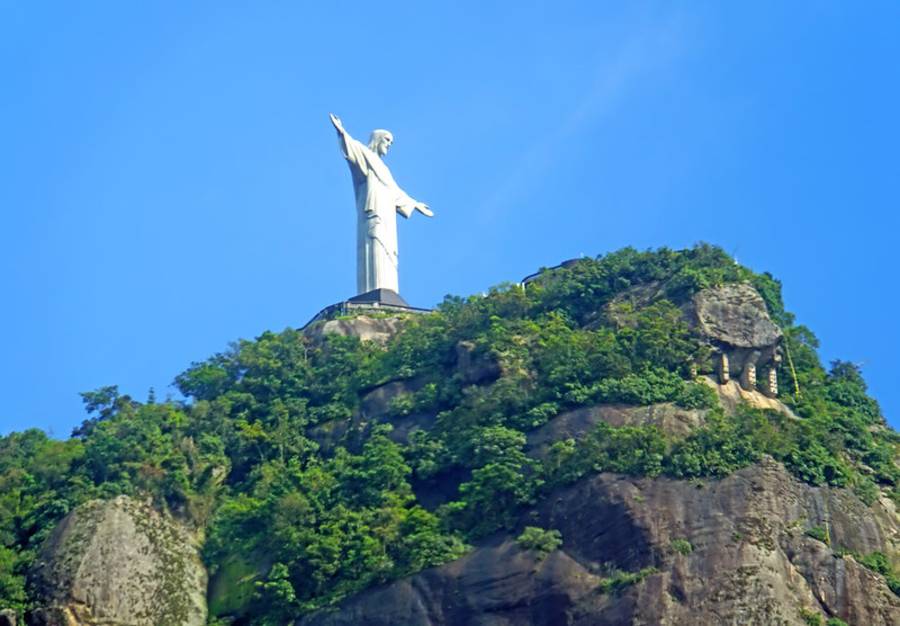
The wonderful symbol of Rio de Janeiro and the whole of Brazil, towering over Rio on Mount Corcovado Christ, stands with outstretched arms, blessing the city chosen by heaven.
The idea of building a magnificent statue of Christ the Redeemer in the then capital of Brazil, Rio de Janeiro, appeared a year before the centenary of the country’s national independence, in 1921.
The construction of the statue began in 1922. Since in those days in Brazil it was not possible to make such huge monuments, all the details of the statue were made in France. Then they were transported to Rio, and there they were delivered by rail to the mountain, where they were assembled into a single whole.
9 years later, in 1931, an incredible statue was ready. The sculpture itself of Jesus reaches a height of 30 meters, the pedestal is 8 meters, and the arm span is 30 meters.
Even though the statue of Christ the Redeemer is far from the tallest in the world, it is so spectacular and beautiful that it deservedly received its title of a wonder of the world.
5. Mexico: Chichen Itza
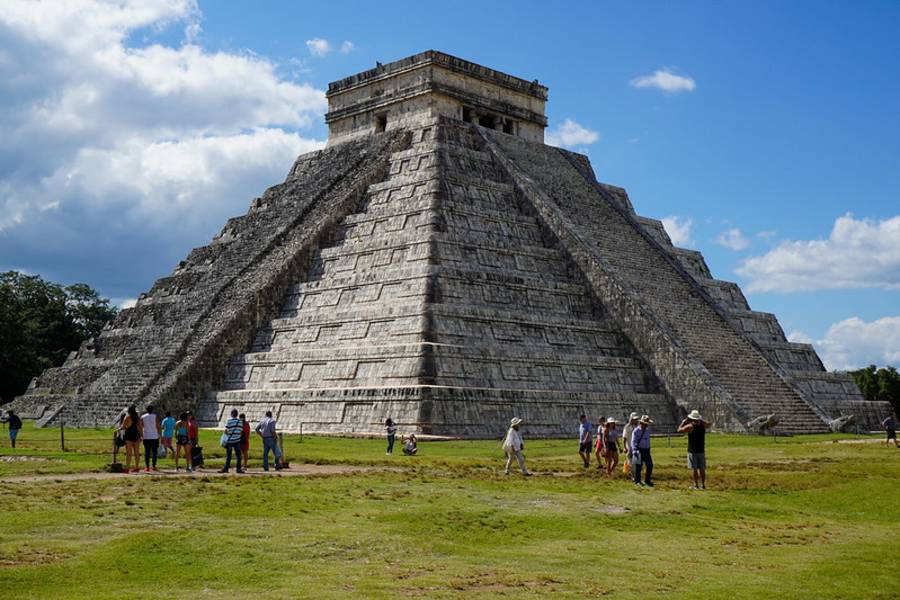
Chichen Itza, located on the Mexican Yucatan Peninsula, was originally the cultural, political, and religious center of the Mayan people.
The exact date of the founding of the sacred city is not known for certain, but scholars suggest that Chichen Itza was founded in the 6th or 7th century AD. In the X century, the city was captured by the Toltecs and after about a century became the capital of this people.
In 1178, the Toltecs were defeated by three united states – Uxmal, Itzmal, and Mayan, and Chichen Itza was defeated.
After a little more than a decade, the city was completely empty, all the inhabitants left it forever. As is most often the case with long-standing stories, now we do not know exactly what exactly caused the departure of the settlers.
However, the legacy of the ancient Mayans and Toltecs remained in the dilapidated walls of the wonderful city, which now delight us with their perfection.
6. India: Taj Mahal
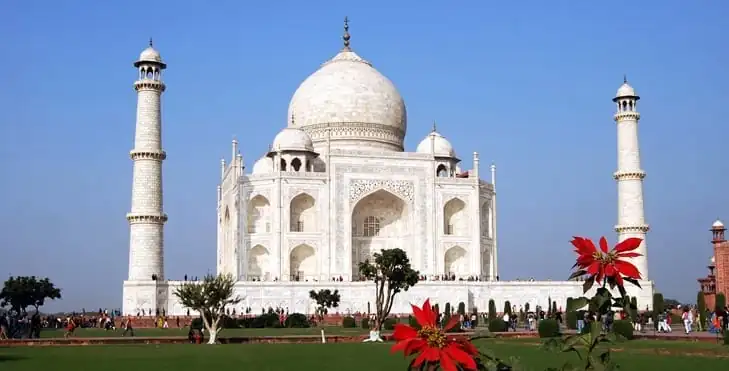
The Taj Mahal is a white marble mausoleum located in Agra, Uttar Pradesh, India. It was commissioned by Mughal Emperor Shah Jahan in memory of his beloved wife, Mumtaz Mahal, who died in 1631. The Taj Mahal was constructed between 1632 and 1653 and is considered one of the most beautiful and iconic buildings in the world.
The building is renowned for its intricate design and delicate architectural features, which blend together Indian, Persian, and Islamic architectural styles. The Taj Mahal is also notable for its stunning gardens, which feature fountains, reflecting pools, and a variety of trees and flowers.
The Taj Mahal is one of the most popular tourist attractions in India and is recognized as a UNESCO World Heritage Site. It is a symbol of love and is visited by millions of people every year who come to admire its stunning beauty and learn about the history of the Mughal Empire.
7. Peru: Machu Picchu

Machu Picchu is an ancient Incan city located in the Andes Mountains of Peru, and it is one of the most famous and visited archaeological sites in the world. The site was built in the 15th century and is located on a mountain ridge above the Urubamba River valley, about 50 miles northwest of Cusco, the former capital of the Inca Empire.
Machu Picchu was constructed using the traditional Incan techniques of the time, with large stones that were carefully shaped and fitted together without the use of mortar. The site was likely used as a royal estate for the Incan emperor Pachacuti and his family.
The city was abandoned after the Spanish conquest of the Inca Empire in the 16th century and remained hidden for centuries until it was rediscovered by American explorer Hiram Bingham in 1911. Today, Machu Picchu is a UNESCO World Heritage Site and is visited by hundreds of thousands of tourists every year.

